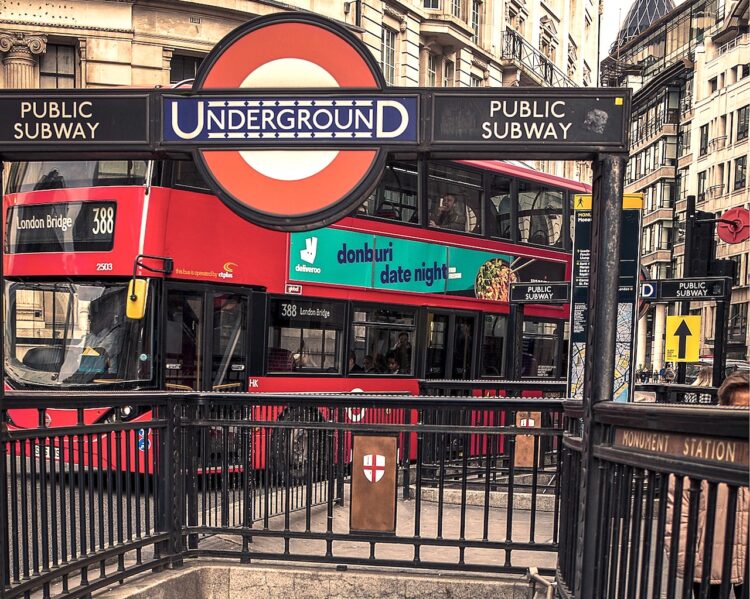The tourism landscape for London, and the United Kingdom as a whole, has largely been viewed through the lens of Brexit in recent years. With Covid-19, labor shortages in the hospitality and service industries affect markets like London to a disproportionately high degree. Despite these challenges, London continues to attract around 30 million visitors from around the world every year.
Tourism contributes £106 billion to the British economy & GDP and supports 2.6 million jobs. By 2025 the UK tourism industry is projected to be worth over £257 billion, around 10% of the UK GDP. The industry supports 3.8 million jobs and has a huge impact on the UK economy.
Tourism in London statistics demonstrates the popularity of the capital in comparison to other locations in the UK as the city has 8 times more visitors than the second most visited city. Holidays is the number one reason why tourists visit the UK, 63% of visits to the UK are for a holiday away.
Below are some of the top trends in the London tourism industry.
Table of contents
PRE & POST-PANDEMIC TRENDS
- London is one of the world’s leading tourism destinations, and the city is home to an array of famous tourist attractions. London attracts around 30 million visitors from around the world every year.
- The capital attracts 8 times more travelers than the second most visited city in the UK.
- The Royal Botanic Gardens (Kew Gardens) were the most visited tourist attraction in London in 2021, welcoming nearly two million visitors.
- The US, France, and Germany are ranked the top three countries visiting London as of 2019. With the highest number of tourists arriving from the United States at 3.09 million visits.
- London’s tourism industry has been badly affected by COVID-19, which has kept many business and leisure tourists away from England’s capital.
- Before the COVID-19 pandemic, London was the third most visited city in the world, welcoming a record 21.7 million inbound visitors in 2019.
- The city lost £10.9bn in tourism revenues in 2020 compared to pre-crisis 2019.
- Tourism businesses in London are suffering and continue to face a barrage of challenges. This includes the UK government’s plans to increase VAT in April 2022, staff shortages exacerbated by Brexit and COVID-19, concerns around health due to the pandemic, and the rising cost of living.
- London’s tourism sector is expected to benefit from the planned multi-million-pound campaign to drive visitors to the city.
- The Mayor of London reportedly plans to spend £10 million attracting domestic tourists to London as an extension of ‘Let’s Do London’.
- According to Google Trends, search volumes in Google for popular keywords among tourists, such as “visit london” and “hotel london”, had by the end of 2022 not fully recovered to pre-pandemic levels.

Search volume in Google for the keyword “visit london”. Source: Google Trends

Search volume in Google for the keyword “hotel london”. Source: Google Trends
MOTIVES & HABITS OF TOURISTS TO LONDON
- London’s cultural experience has broad appeal across all age groups, with the young and old rating this their number one driver for visiting.
- The predominant reason for leisure visits to London is the city’s cultural experience. It’s the considerable offering of museums, galleries, exhibitions, and attractions.
- International visitors treat a visit to the UK as an educational trip, the top seven attractions in London being museums and galleries, visitors are keen to learn while in the UK’s most popular city.
- Word of mouth and internet searches have the most overall influence on attractions cultural tourists visit, although guide books shape more visits for overseas trip-takers.
- West End shows hold particular appeal for domestic tourists and older visitors, while London’s historic attractions are most sought after by overseas tourists.
- The most popular tourist activity and attraction is sightseeing.
DEMOGRAPHY
- Tourists aged between 25 and 44 years old recorded the highest number of visits in London.
- With just under seven millionannual visitors, the British Museum is the most visited attraction in the UK and the fifth most visited museum in the world.
- There is a strong demand for the city’s architecture and iconic landmarks across most age groups.
OTHER INDUSTRY TRENDS
- London is the number one staycation destination in the UK.
- The peak tourist season in London is pretty much year-round, but late spring (and summer) are especially busy.
- Activities specifically focused on ‘city life’ such as dining, socializing and shopping are the most popular things to do for overseas visitors.
- Approximately 8.2 billion British pounds were spent by visitors who traveled to London on vacation in 2019, whereas business travelers spent around 3.6 billion British pounds.
- Until international visitors return in significant numbers to London, domestic tourists are set to become the target for the city’s tourism sector.
- Even though the number of global international tourist arrivals has increased significantly compared to last year, the figures still remain 67 percent below the pre-pandemic levels.
- London faces competition to attract tourists; competitor cities are already out-promoting and out-spending London.
- Trips made to London for vacation or holiday purposes lasted 4.8 nights on average. Inbound visitors traveling to London for study purposes however stayed the longest, at an average of 18 nights.
- The survival of airlines under threat, international tourists heading to London may find they have fewer options on how they get there.
- Tourism plays a vital part in London’s social and economic life – it supports as many as one in seven jobs in the capital and contributes almost 12 percent of London’s GDP.
- International arrivals are expected to return to pre-pandemic levels by 2024, with a projected 39.8 million arrivals. (CAGR 2022-24: 8.6%).
- The pandemic has caused a surge in UK domestic travel. In addition, googling for terms such as “uk staycation” and “glamping holidays uk” increased by over 400%, further proving the growing interest of the UK population to vacation in their own country.
- One in five Londoners are now more likely to use travel agents than before the pandemic.
- Travel agents and operators have reported a significant increase in bookings in recent weeks for the upcoming spring and summer seasons.
- In 2021, it was estimated that Brits would spend an average of £770 on domestic summer holidays
- Tourism is the fastest growing industry in Britain. It is expected to expand by 3.8% a year up until 2025, accounting for 10% of all jobs.
- Health and Safety still affect how people travel.
- In 2019, British touriststook nearly 123 million domestic holidays and only 93 million international holidays
INDUSTRY INSIGHTS
- Tourism in London accounts for £6.6 billion ‘tourism direct GVA’ of £34.3 billion nationally.
- Tourism and the night-time economy contribute £36 billion a year to London’s economy overall and employ 700,000 people.
- It is estimated that it could take until at least 2025 for domestic and international visitor overnight numbers to return to the levels seen in 2019, with spending predicted to take until 2026 to surpass pre-pandemic levels.
- As of 2019, the average amount tourists spend per day measured to 98 British pounds.
- In 2022, inbound visits to London are forecasted to increase to 21.1 million, and spending to £16.9 billion.
- Thousands of seasonal and permanent staff are hired from EU countries to work in London’s tourism sector. An increase in bureaucracy, as well as a rise in the costs of hiring overseas staff, is affecting British tourist businesses.
- London inbound tourism spending is higher for business travelers than those visiting friends or relatives.
- Repeat holidaymakers stay longer on their visits than first-time visitors. They also spend more on average per night.
- 54% of all inbound visitor spending is accounted for by London. The rest of England accounts for 33%, Scotland 10%, and Wales 2%.
- Tourism continues to be a significant contributor to the British economy, but the pandemic has had a profound effect on the industry.
- There is real uncertainty about what impact Brexit could have on the industry. The combination of Brexit and the pandemic means there are concerns about price rises and the affordability of holidays going forward.
- The coming months appear to be challenging for UK airports, and its airlines. A lack of staff in key positions could create an array of knock-on impacts, including missed flights, cancellations, and negative traveler sentiment.
- The tourism landscape for London, and the United Kingdom as a whole, has largely been viewed through the lens of Brexit in recent years.
REFERENCES
https://cheaphotels4uk.com/travel-guide/10-popular-attractions-london-number-visitors
https://www.statista.com/statistics/287133/annual-number-of-overseas-visits-to-the-united-kingdom-uk/
https://files.londonandpartners.com/l-and-p/assets/our-insight-londons-cultural-tourists.pdf
https://www.statista.com/statistics/487772/average-length-overseas-visits-by-purpose-london-uk/
https://www.visitbritain.org/2022-tourism-forecast
https://www.condorferries.co.uk/uk-tourism-statistics
https://files.londonandpartners.com/l-and-p/assets/our-insight-londons-cultural-tourists.pdf
https://www.hotelmanagement-network.com/comment/londons-tourism-campaign-boost/
https://www.finder.com/uk/inbound-tourism-statistics
https://cybercrew.uk/blog/tourism-statistics-uk/

Hello! I am Axel, tripplo.com’s travel savings, deals and discounts expert and founder. I have been in the travel deals and discounts industry for almost a decade now. It’s me who publish and update most of the content and discounts on tripplo.com! I also have a podcast in which I share valuable information about how to get the best travel deals and discounts.










No Comments
Leave Comment